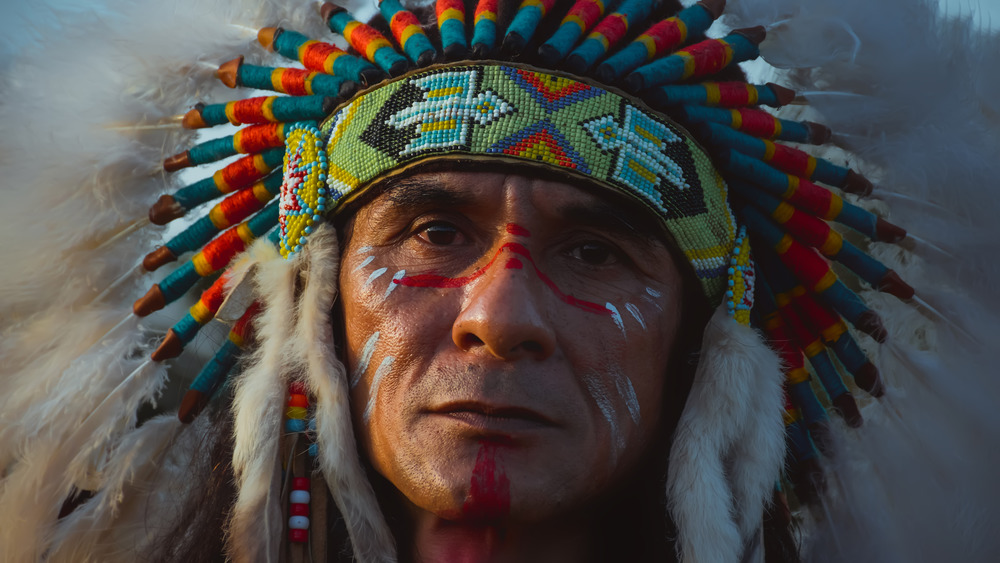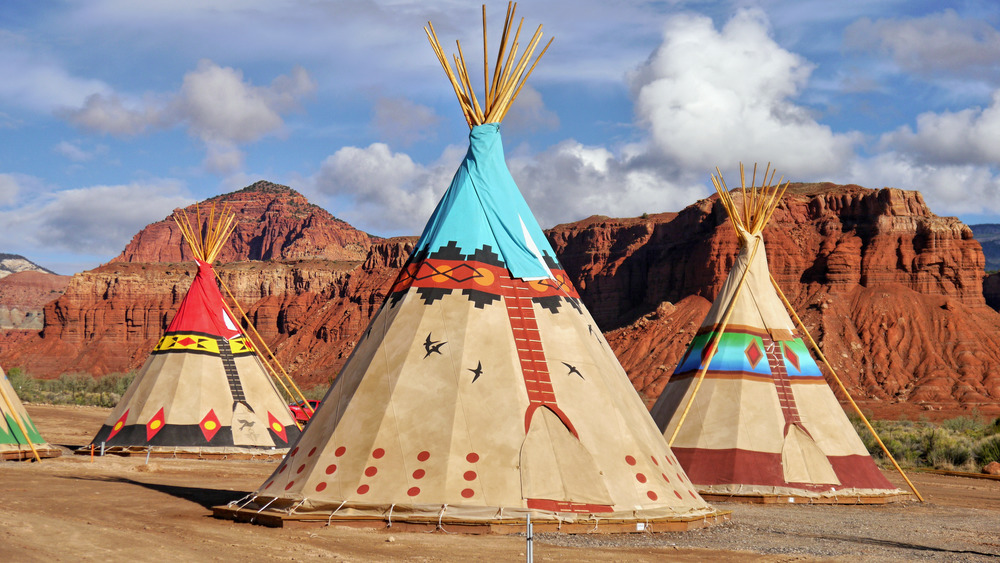The History Of The Native Americans' National Day Of Mourning
For most people living in the United States, Thanksgiving represents a holiday full of pumpkin pie, turkey and all the fixings, and family. But the fourth Thursday in November is also a Native American observation called the National Day of Mourning.
The United American Indians of New England started the observation in 1970 after Wamsutta Frank James, from the Wampanoag nation, refused to appear at a 350th anniversary of the pilgrims coming to Plymouth. The draft of a speech he had written was rebuffed, according to CNN, who published part of it on their website. It included these words: "The Pilgrims had hardly explored the shores of Cape Cod for four days before they had robbed the graves of my ancestors and stolen their corn and beans," James wrote.
Organizers asked him to rework his lecture, but he did not want to "'speak false words' in thanks of the pilgrims who claimed native land and caused pain and suffering to native people," according to ProFlowers. "Since then the organization along with its supporters continues to amplify Native American perspectives relative to the Thanksgiving holiday and other current struggles native people face today."
The pilgrims owe the Wampanoag, a tribe in the area, gratitude, said the Mayflower 400 website. Without their help, the group might not have survived their first year. The story goes that Samoset, a Native American who spoke English, visited the settlement. An alliance formed and after a successful harvest, the colonists and the tribe ate together ... allegedly, the first Thanksgiving celebration.
An observation that commemorates the 'real' history
As more people came to the colonies, the relationship between the tribe and the Pilgrims faltered as Native Americans lost their land, were enslaved and, sometimes, killed.
Kisha James, granddaughter of tribal leader Wamsutta Frank James, suggested that non-Native American people can use the National Day of Mourning as a moment to educate themselves on Native American history. "Try to divorce your Thanksgiving celebrations from the Thanksgiving mythology," she said to WBUR. "So no more pilgrims and Indians, no more teaching your children about the first Thanksgiving as we learn it in public school where it was a friendly meal."
Traditionally, Native Americans and others commemorate the National Day of Mourning on Cole's Hill, near Plymouth Rock. The United American Indians of New England website describes the day as a "solemn, spiritual and highly political" event. Many participants fast, foregoing food from sundown the previous day to the late afternoon. "We are mourning our ancestors and the genocide of our peoples and the theft of our lands," said the organization. The National Day of Mourning "is a day when we mourn, but we also feel our strength in action."
The day includes a march, Native American speakers who talk about the history and struggles of indigenous peoples, and a potluck social where participants break their fast (although not in 2020, due to Covid-19). For those out of the area, you can watch the scaled-down November 26, 2020 commemoration on YouTube.

